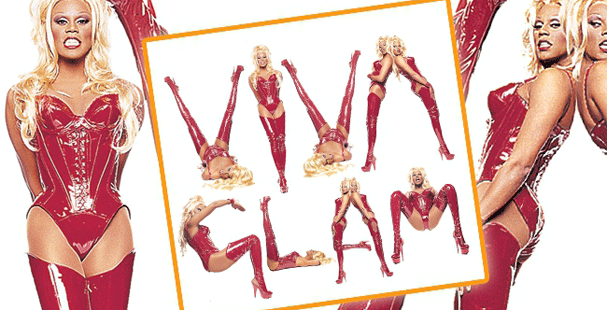Final Essay
- reifm605
- May 9, 2019
- 3 min read
Queerness in Beauty
“Beauty is in the eye of the beholder” is a quote commonly used for many different scenarios. The way people perceive the idea of “beauty” has changed drastically, meaning, the way traditional beauty standards and ideals have dramatically shifted in the past few decades. As an effect of this, beauty/cosmetic industry has undergone changes, and growth in this time. Now, more than ever we are seeing ads and campaigns that feature more people of color, people of all shapes and sizes, and an inclusion of all genders. The beauty industry is now recognizing queer people in the beauty industry, and its queer consumers.
A major turning point in makeup history was when RuPaul became the first ever MAC Cosmetics’ Viva Glam ambassador. The annual campaign of Viva Glam is a campaign in which a celebrity will endorse a lipstick, and its proceeds go to the MAC AIDS Fund, which has been renamed the Viva Glam Fund. This year, 2019, marks 25 years of the annual Viva Glam campaign. Over the years, MAC has featured many celebrities as their ambassador, such as Ariana Grande, Lady GaGa, and Boy George. Throughout the years, the Viva Glam Fund has raised over $500 million to help those living with and affected by HIV and AIDS. They also support other organizations, such as Planned Parenthood and GLAAD. This is significant because MAC not only started a movement and created awareness to help queer people in need, but they have kept this going as a tradition. They know queerness is in the DNA of their company.
With RuPaul and MAC as the catalyst, many brands began to take note, and move with the cultural shift. Originally, beauty ads and campaigns were overtly feminine, and always marketed beauty products to women only. Not only that, beauty brands would feature a specific types of girls as their model, the housewife, the bubbly young girl, or the sultry bombshell. There were no men, drag queens, or women who did not present themselves as traditionally feminine.This changed in 1994, with RuPaul and MAC.
After the first Viva Glam campaign in 1994, there wasn’t any other major impactful queer-centric events in the beauty industry, until 2016, when the YouTube star James Charles became Covergirl’s first “Coverboy.” This was the first time the mainstream had seen a male presenting person in makeup recognized by a major cosmetic brand. This was also a big leap for internet creators, as James Charles was also representing the YouTube beauty community. The world began to take the people who do makeup reviews on YouTube more seriously, which include many queer people, transgender people, and men in makeup.
Brands now include YouTube and Instagram creators/influencers in major projects, product development, ad campaigns, and of course features on their social media platforms. Milk Makeup, Fenty Beauty, and Morphe have been known to be brands that are inclusive to queer and transgender people. While these positive events take place, there was one scandal involving exclusivity towards queer people. The popular brand, Huda Beauty was called out for not including queer makeup artists and influencers on their social media pages like their more inclusive competitors. The reason for this is because Huda Beauty is based in Dubai, which is known to have homophobic and transphobic laws. Since this scandal, Huda has included queer influencers on social media, but only as a result of people threatening to boycott the brand.
There have been other major strides for queer people in the beauty industry. Many of the most popular cosmetic brands this year are actually owned and founded by queer people, such as Fluide Beauty, Too Faced, Marc Jacobs Beauty, Jeffree Star Cosmetics, Artist Couture, Dragun Beauty, Lunar Beauty, Patrick Ta Beauty, and many more. Chanel Beauty is welcoming men in makeup through their line Boy De Chanel, and normalizing makeup for all men. The support of these brands have been astronomical in sales, especially within the past three years, further proving that queer people belong and thrive in the beauty industry.
Now, the way people and makeup consumers see beauty is so much more diverse, inclusive, and attainable than what used to be advertised as “beauty.” By opening the door of the cosmetic industry to queer people, the world is now open to exciting things like the artform of drag, and all the creativity that comes with it. So much more queer talent, makeup artists, and creators are being showcased and revered by the mainstream.There is so much more beauty in the world by including and involving queer people. There is so much beauty in queerness, and the future is already looking so much more beautiful.



Comments